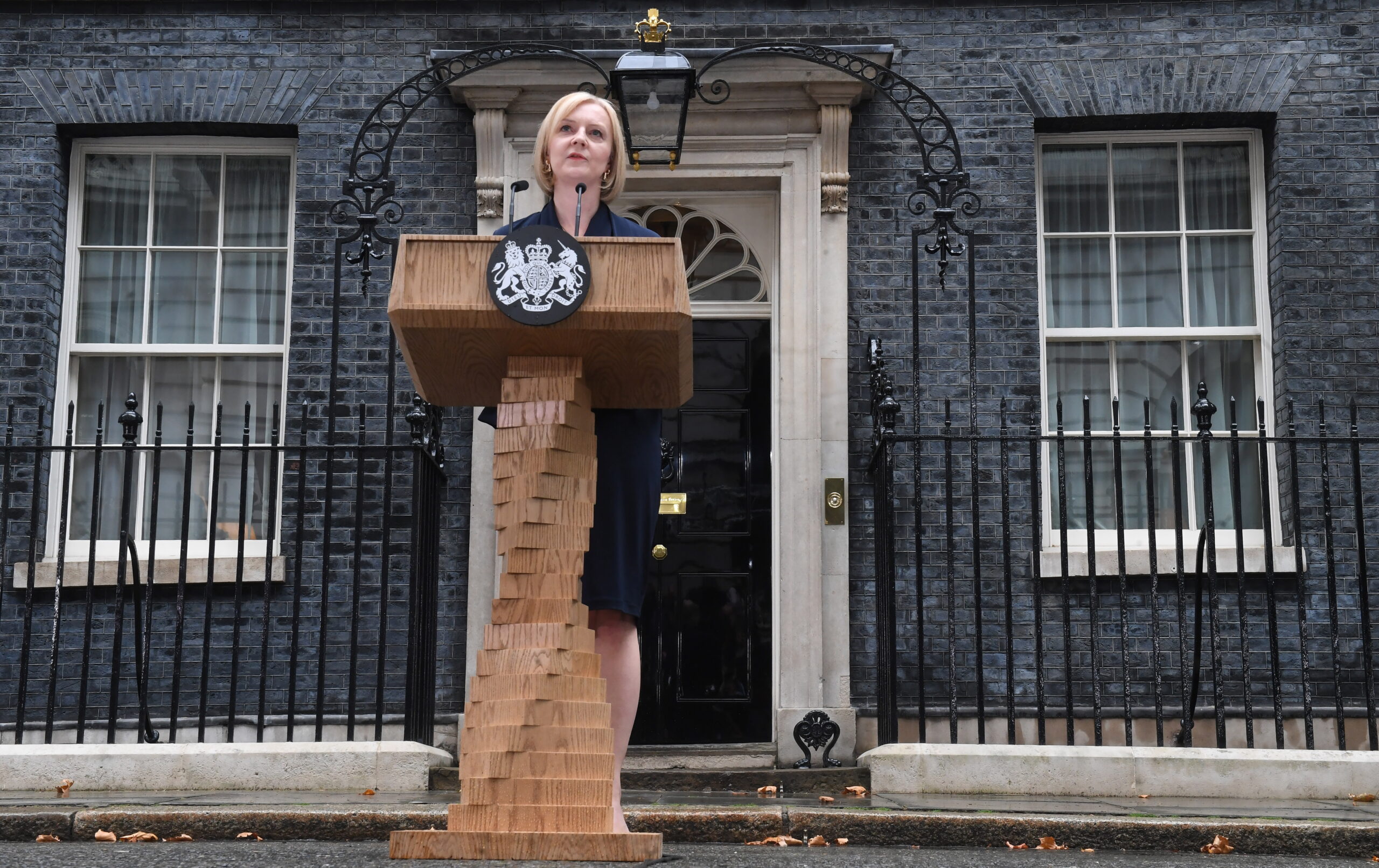We need to clarify from the very beginning that it was not really a collapse but a small-scale financial turmoil, most of which has passed, including the drama of the Bank of England having to intervene.
The pound dropped by less than 10%, and long yields rose by about half a percent.
And all of that happened against a background of rising interest rates and a falling pound against the US dollar.
This all happened for two reasons; one was fundamental, the other technical.
The fundamental reason was the new Chancellor Kwasi Kwarteng’s announced tax cuts of £45 bln for the rich as part of a mini-budget intended to boost economic growth.
The package of measures would require an additional borrowing of £72 bln in the current financial year, according to the Treasury, which is a massive amount on top of earlier borrowing and questioned the Conservative party’s claim to fiscal responsibility.
This came at a time when the Bank of England was raising interest rates and thus borrowing costs to fight inflation.
Betting that radical tax cuts will boost economic growth despite high inflation, an energy crisis, and economic uncertainty over the war in Ukraine was not well received by none other than the City of London, the financial hub.
There was thus an atypical rift between the Tory party and the city.
The new government of prime minister Liz Truss and her chancellor of the exchequer are not your typical populists.
They are more likely conservative purists, taking a page from Margaret Thatcher’s playbook in what proved a controversial gambit.
Supply-side economics can have their use and day in the sun, but not every day.
As applied by Margaret Thatcher in the UK and Reagan in the US in the 1980s, supply-side economics was successful because their time had come.
The high inflation of the 1970s and early 1980s was underpinned by a class struggle and a wage-price spiral that had led to stagnation, under-investment and declining productivity.
It was a different crisis from the one we have today.
That was a time of capital scarcity and disproportionate allocation of national income in favour of labour.
Today the opposite is true.
The relatively low investment ratios at the national level result from low returns, not a lack of liquidity.
And labour’s share in national income remains near the lows of the last 40 years.
Cutting taxes in the 1980s led to more investment and capital accumulation, but today’s starting positions are vastly different.
Liz Truss’ government, out of ideological zealotry perhaps, got it wrong.
The technical reason had to do with the management of pension funds.
In the UK, pension funds are mostly private, and like elsewhere, they are large holders of government debt.
And whilst rising interest rates are generally favourable, pension funds were forced to sell some of their positions to meet margin calls.
Their managers had decided to hedge against interest rates falling; instead of benefiting from this windfall rise in interest rates, they needed to unwind a part of their hedge deals.
This would come with margin calls which in turn triggered the sales of assets.
When you have falling bonds and a falling currency, there is fear this might create a destabilizing loop, so the bank of England had to intervene to provide the liquidity needed.
So, the BOE had to pump liquidity at the same time it was raising interest rates.
But this is not quantitative easing, other than easing liquidity pressure on the pension system.
Truss’ government had to suffer the humiliation a few days after repealing a flagship policy in their first month in office.
What happened to the currency and bond markets?
The pound dropped against the dollar, and yields on government debt spiked higher.
But these movements were not dramatic, especially against a general background of a falling currency and rising interest rates.
The pound sterling dropped by about 7 cents to the dollar from £1.14 on September 20 to £1.07 on September 27.
The yield on the 10-year gilt spiked to 4.5% from 3.8% in the same span.
The pound recovered to £1.14 by October 4, and the 10-year yield dropped to 3.8% after the British government reversed its debt-financed tax cuts.
The general drop in the pound’s exchange rate against the dollar, which is about the same as the drop of the euro against the dollar, has been going on since the end of 2020 and seems to continue.
But that’s a different story.
Why currencies rise and fall?
Central banks do not target the exchange anymore.
Exchange rate pegs typically invite large-scale speculation and have been abandoned in most cases.
Most countries today allow their exchange rates to fluctuate.
The other extreme is to fix your exchange rates irrevocably in a currency union, which is what the Eurozone is.
An exchange rate is determined by the balance between its supply and demand, but trade is not what determines this balance.
Foreign exchange transactions are driven by financial flows, purchasing and selling assets and liabilities between countries worldwide.
Financial flows, in turn, are driven by interest rates and risk factors.
That the US dollar has been appreciating against all major currencies in the world in the last two years reflects the fact that the federal reserve is more aggressive in raising interest rates than either the ECB, the Bank of Japan or the bank of England; and the US is a stronger economy; and the dollar as the global reserve currency acts as a safe haven, in times of uncertainty like now.
What does it mean?
Exchange rate fluctuations mean differently for different countries.
They mean less for the US, a large and rich economy with only a small foreign sector.
It means much more for Germany or the United Kingdom, whose economies have much larger foreign sectors. The more open an economy is, where openness is measured as the sum of exports and imports of goods and services in relation to GDP, the more vulnerable an economy is to exchange rate fluctuations.
The net result is that when the euro or the pound depreciates and the dollar appreciates, capital flows from the UK and Europe to the US.
A part of this can be foreign direct investment, but most of it is portfolio investment.
But capital is leaving the EU and the UK, stiffening liquidity conditions at home.
By the same token, a strong dollar poses problems for the rest of the world.
It translates to pressure in Europe, Japan, and the UK, to raise their interest rates, and lessen the pressures on their currencies.
For emerging markets, the impact is more severe because, to a considerable degree, the private sectors borrow in dollars and, therefore, will have to absorb a higher debt burden in terms of their local currencies
Expats
UK expats living in Cyprus will not be affected very much because the exchange rate and the pound have not moved much between them.
But they will be affected by the cost-of-living crisis due to high inflation.
Borrowers in either the euro or the pound will be affected by the higher cost of servicing their debts as interest rates rise steeply.
By Ioannis Tirkides, Economics research manager at the Bank of Cyprus










